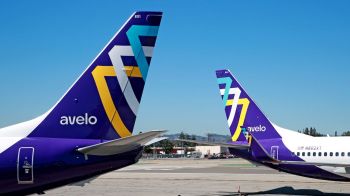Cheaper fuel, cheaper flights. But not for you.
A gallon of jet fuel will cost you around $1.66 a gallon these days. That’s down 40 percent from what it was this time last year.
For airlines, which bought more than 16 billion gallons of fuel in 2014, we’re talking about a savings of possibly around $22 billion, says Samuel Engel, who manages the aviation practice at ICF International. In 2012, fuel represented 31 percent of global airline costs, and this year it’s around 25 percent. Fuel isn’t the airlines’ only cost, but it’s their largest.
If you were hoping to see some of that savings in the form of cheaper tickets, get in line. Your group isn’t boarding yet.
“There are some complicating factors to consider,” says Sanjay Nanda, senior vice president at Sabre Airline Solutions. “Many airlines hedge on fuel.”
That is, they buy it in advance at locked-in prices. It saves them from rapid spikes in fuel, but also keeps them from taking full advantage of price declines. About 25 percent of airline fuel was hedged this way, according IFC International. “So I’d say most airlines have benefitted but some more than others,” says Nanda.
Still, they’re clearly saving billions. Where is it going?
“They’re putting that money back into the business in the form of new planes, new services – larger bins, new wifi,” says Jean Medina with Airlines for America, an airline industry group. “Our members will be taking effectively one new airline delivery every day.” U.S. airlines also have $60 billion in debt that needs servicing as well, says Medina.
Another priority group for fuel savings, at least for some airlines, is labor. “Delta, a couple months ago, made the largest profit-sharing payout in history to their workers,” says IFC International’s Samuel Engel. Any labor union with a contract to renegotiate will also likely take a keen interest in fuel cost savings if they’re sustained.
So what about those fare prices?
“As fuel prices come down, it starts to allow airlines to operate more routes, and it allows them to compete against each other and offer discounts,” says Engel. “But it’s not immediate. It doesn’t happen until the competitive dynamic plays out.”
And oil prices come and go, says Sabre’s Nanda. So for airlines, “prices are more tied to supply and demand,” he says.
Supply has increased, according to the Airlines Reporting Corp. “There’s been a 6 percent rise in available seats,” says Chuck Thackston, a managing director at ARC. Airlines are managing to fit more people on each plane, whether by increasing the number of seats or purchasing larger capacity models. “Airlines are competing to fill those additional seats,” he says.
ARC says it’s this supply increase that is affecting fares. “Travel within the United States is largely flat year over year,” says Thackston. “The past several years have seen airfares increasing, and we now see those fares leveling off and going down very slightly for summer travel.”
Summer airfare to Europe has declined by about 3 percent, with some destinations seeing particularly stark drops. Fares to Kona, Hawaii, fell 12.7 percent. Trips to Belgrade, Serbia, are 24.3 percent lower on average.
Airfare to New York as a domestic destination increased 9.3 percent, and international fares to Berlin increased 10.2 percent.
So, no, lower fuel prices won’t mean a big dip in airfare just yet.
There’s a lot happening in the world. Through it all, Marketplace is here for you.
You rely on Marketplace to break down the world’s events and tell you how it affects you in a fact-based, approachable way. We rely on your financial support to keep making that possible.
Your donation today powers the independent journalism that you rely on. For just $5/month, you can help sustain Marketplace so we can keep reporting on the things that matter to you.


















